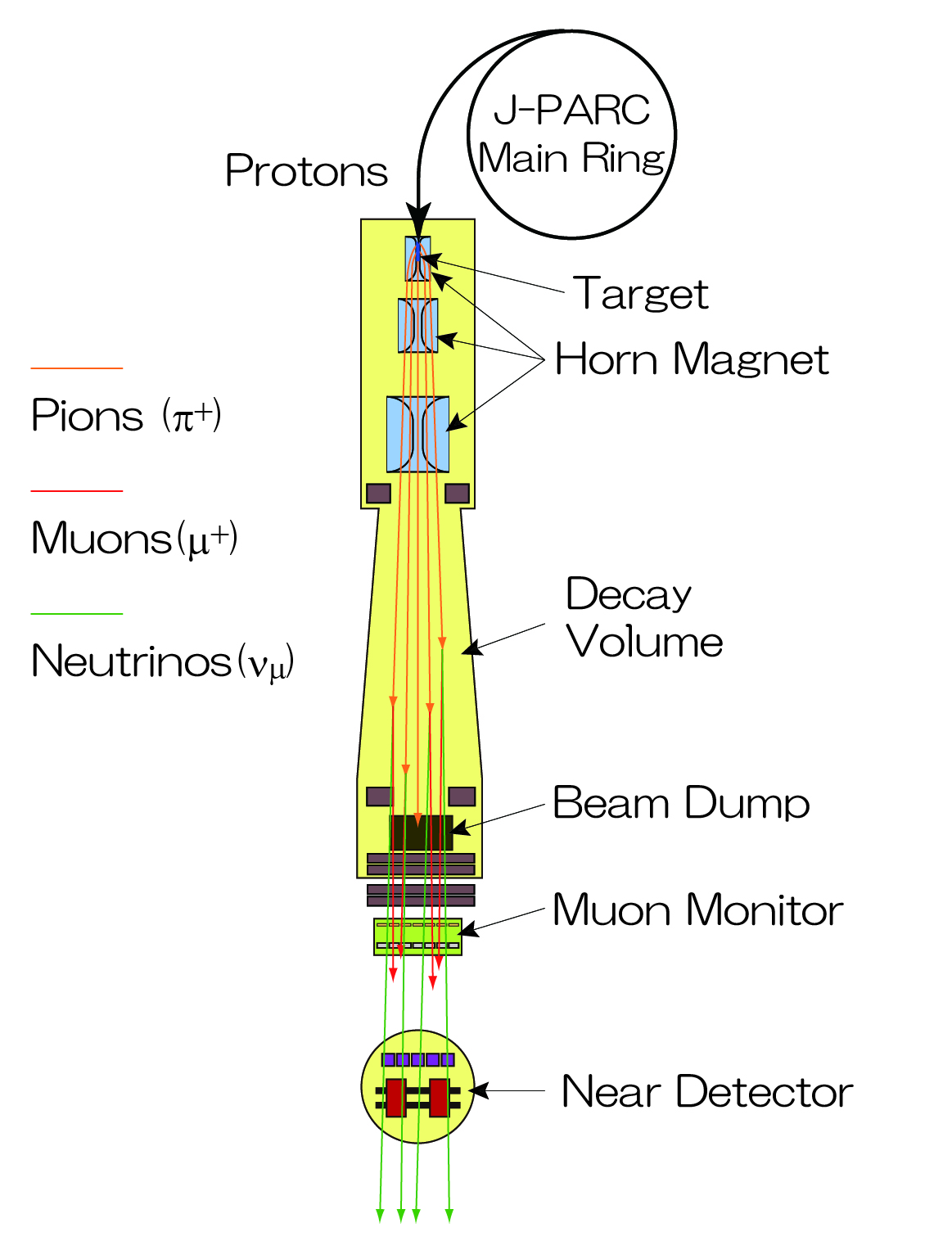Starting Up J-PARC Neutrino Beam
At J-PARC (Japan Proton Accelerator Research Complex, Figure 1) in Tokai Village, Naka District, Ibaraki Prefecture, the next-generation neutrino oscillation experiment T2K (Tokai-to-Kamioka) is in the final stages of adjusting the beamline and detectors in preparation for the full-scale start of the experiment. The High Energy Physics Laboratory at Osaka City University is also participating in this experiment, providing opportunities for graduate students to play active roles. Here, I would like to discuss the overview and future plans of the T2K experiment.
Since the existence of the neutrino particle was confirmed by Reines and Cowan in the late 1950s, numerous studies have been conducted on its types and properties. It is now known that neutrinos belong to the lepton family, like electrons, and there are three types corresponding to the electron (e), muon (μ), and tau (τ) particles: electron neutrino (νe), muon neutrino (νμ), and tau neutrino (ντ). However, it has been challenging to precisely measure the mass of neutrinos, and experimental results have not contradicted the possibility of zero mass within the margin of error. The framework of the particle model was also constructed with the assumption of zero neutrino mass. Recently, however, it has become possible to study neutrino mass in detail by measuring a phenomenon called “neutrino oscillation.” Neutrino oscillation refers to the observation that a neutrino, initially generated in a specific flavor state through processes like pion decay, is observed in a different flavor state after traveling a long distance. This is thought to occur because the three types of neutrino flavor states (νe, νμ, ντ) are not identical to the mass states (ν1, ν2, ν3) in free space but are mixed (Figure 2), causing the ratio of these states to change over time. Precise observations of atmospheric neutrinos by Super-Kamiokande and studies using artificial neutrinos from accelerators and reactors (K2K, MINOS, KamLAND) have confirmed that the amount of neutrinos observed after long-distance travel is less than expected from their production quantity, interpreted as a result of neutrino oscillation changing them into other types of neutrinos (neutrino disappearance events: νμ → νx≠μ, νe → νx≠e). Consequently, it has been almost established that “neutrinos have a very small but finite mass.” The T2K experiment aims to achieve two main goals. First, it seeks to accurately measure neutrino disappearance events to obtain information on neutrino mass and precisely measure the mixing angles between different states. Second, it aims to search for the yet unconfirmed neutrino appearance event using νμ → νe. If found, it would be a world-first discovery and would provide more concrete evidence of neutrino oscillation, as it would detect something that should not be observed without oscillation.
To succeed in this experiment, a very strong and high-quality neutrino beam is required. By “high-quality”, we mean “uniform in energy and high purity.” At J-PARC, such a neutrino beam is produced in three stages. First, protons are accelerated to 30 GeV and collided with a graphite target to produce pions (π+). These pions, which fly off in various directions, are focused forward by special electromagnets called horn magnets. Finally, these pions decay (π+ → μ+ + νμ), producing neutrinos (mainly muon neutrinos). Figure 3 schematically illustrates this process. Currently, the accelerator at J-PARC is being rapidly adjusted, and on April 23 of this year, a neutrino beam was produced at J-PARC for the first time. This was confirmed by detecting muons, produced simultaneously with neutrinos, using monitoring equipment (muon monitor in Figure 3). Figure 4 shows the monitor’s output screen at that time, with the central pulse waveform indicating the detection of the signal. Additionally, vigorous efforts are being made to construct devices to monitor the produced neutrinos within the J-PARC site (Figures 5, 6), and about half of the detector modules to be installed were completed by the end of June.
The construction of other necessary detectors for the T2K experiment is also progressing smoothly, with all equipment expected to be in place by the end of this summer. The T2K experiment is anticipated to begin in earnest this winter, and the first analysis results are expected to be available in 2010.






